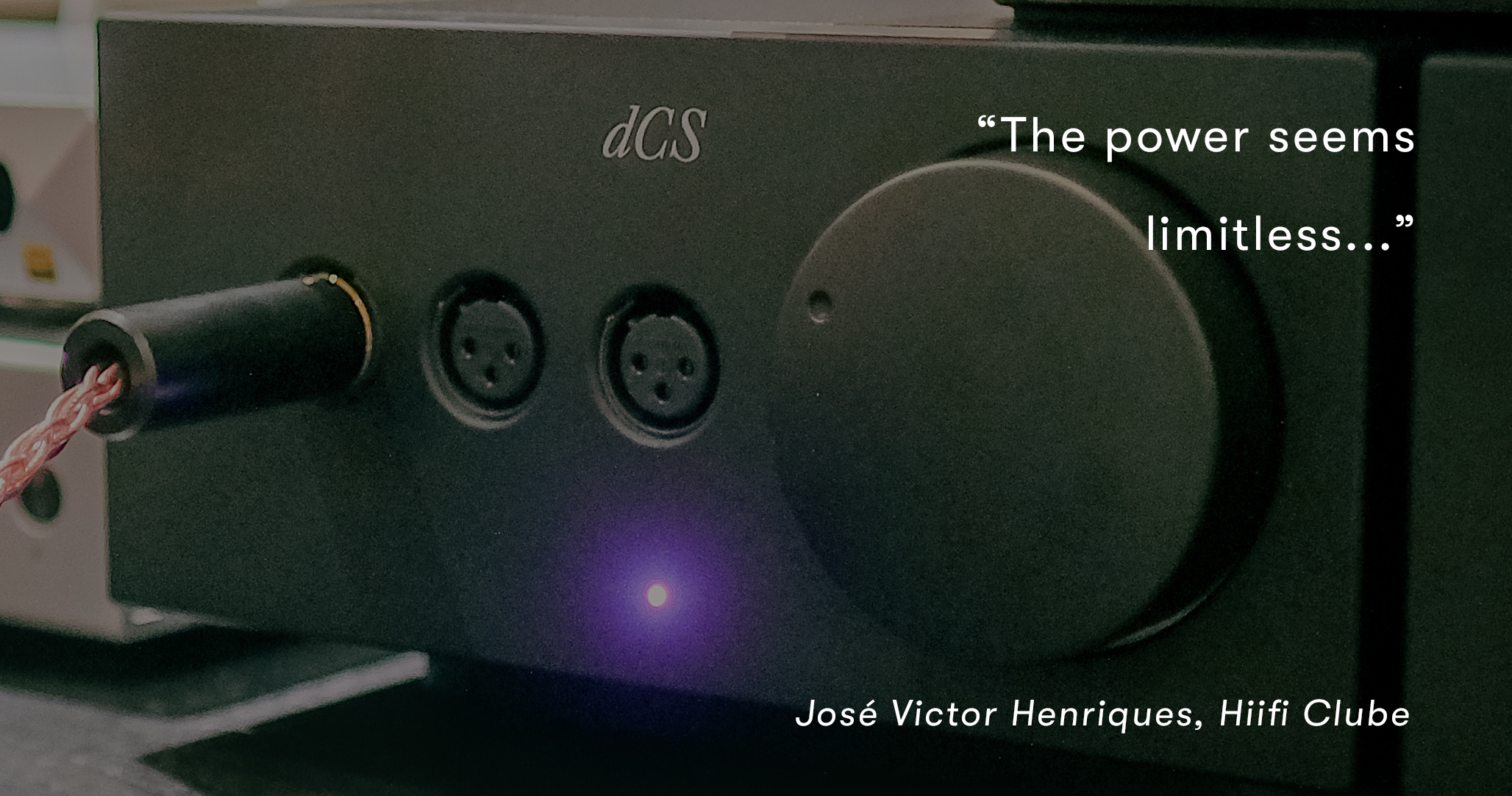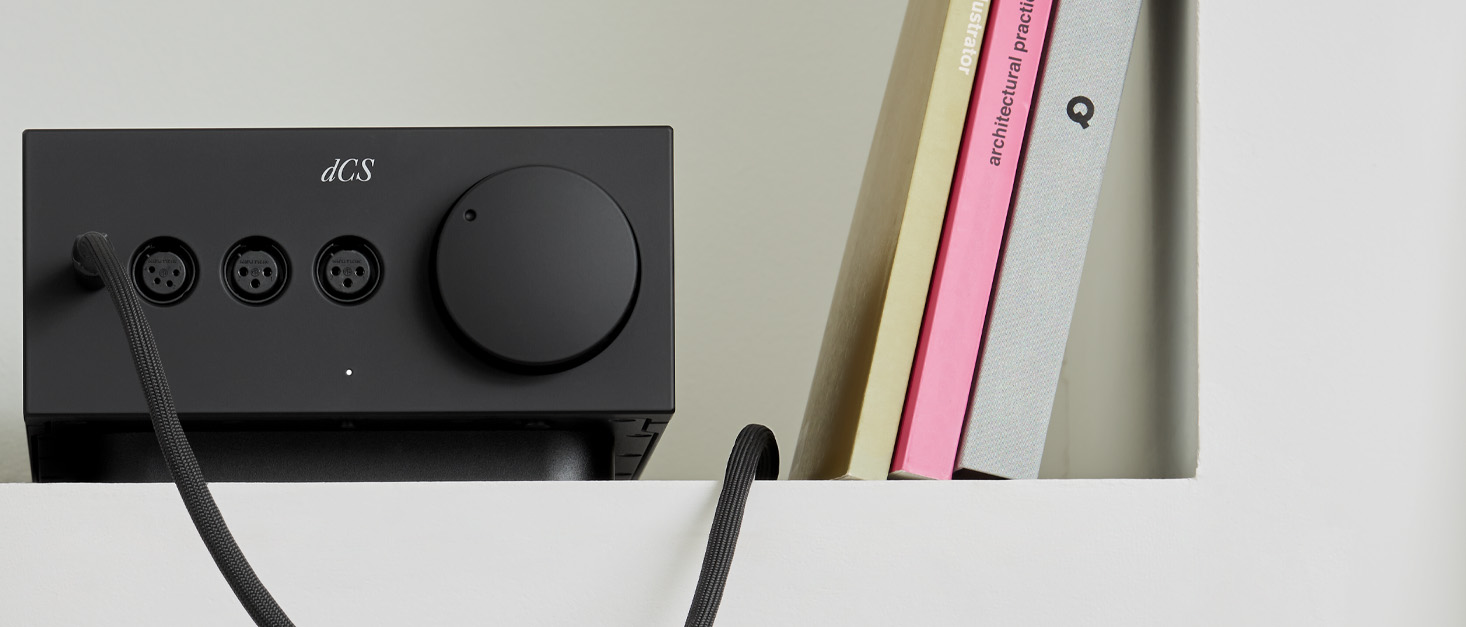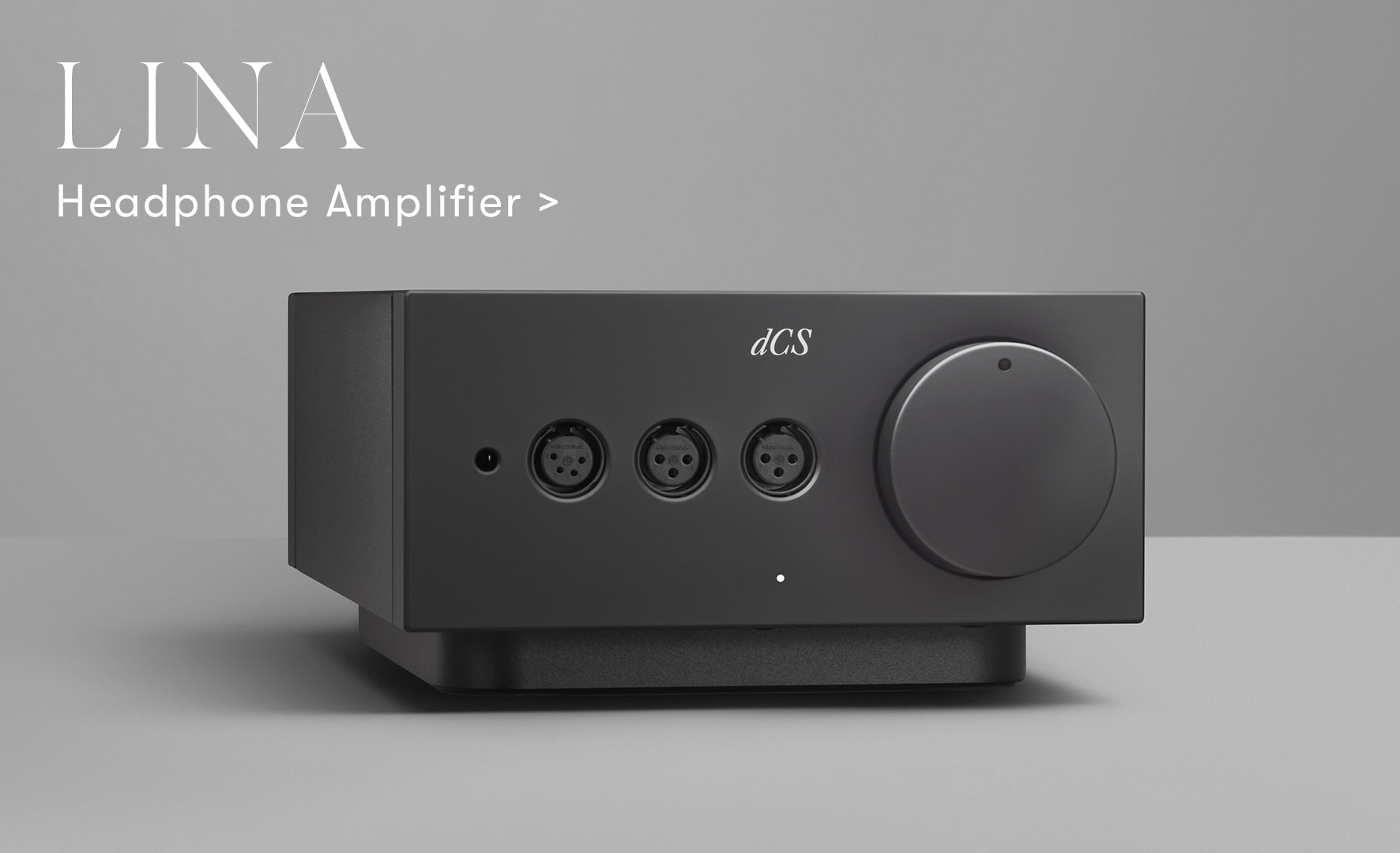Over the past few months we’ve been taking an in-depth look at the design of the Lina Headphone Amplifier. We’ve discussed the importance of drive and linearity, and explored the steps we’ve taken to ensure the amp delivers an exceptional sonic and measured performance. We’ve also highlighted some of the key considerations and requirements that shaped its development.
In the third and final instalment of this series, we take a look at flexibility, highlighting some of the important features that help ensure the Lina Headphone Amplifier can excel with any pair of headphones, and any DAC or source device.
Balanced inputs: Designing for a range of DACs and sources
The dCS Lina series comprises three products: a Network DAC, Headphone Amplifier and Master Clock. These components are designed to provide an excellent performance when used as separates or as part of a complete Lina system. Each one is compatible with a vast range of audio equipment–a core requirement for all dCS products, and one that reflects our commitment to ensuring our systems are able to support a myriad of use cases.
In the context of the Lina Headphone Amplifier, this meant creating an amp that is compatible with a vast selection of source devices, and can drive almost all available headphones, from insensitive planar magnetic headphones through to sensitive IEMs.
The amplifier has three sets of inputs: an unbalanced input on RCA connectors, and two sets of balanced inputs–one buffered and one unbuffered–on XLR connectors.
As we discussed in a previous article on linearity, the unbuffered balanced input has a lower input impedance. This offers superior performance but is harder to drive, and requires a source with lower output impedance.
The buffered balanced input, in contrast, has a higher input impedance as a result of its buffer stage. This makes it easier to drive and means it is compatible with a wider range of sources.
Having a choice of unbuffered and buffered balanced inputs is unusual: most headphone amplifiers have a single set of balanced inputs to use with a fixed input impedance.
Including both sets allows us to offer superior performance when the amp is paired with lower output impedance sources that are capable of driving an unbuffered balanced input (such as the Lina Network DAC, and other DACs within the dCS range), while also making sure the amp can be connected to whatever source a listener desires.
Controlling Gain: Driving different types of headphones
In a previous article exploring the Lina Headphone Amplifier’s drive capabilities, we discussed some of the challenges inherent in creating an amp that can drive a wide range of headphones–for example, being able to deliver the kind of power required to drive insensitive planar magnetic headphones, without overdriving sensitive IEMs so much that listeners experience a higher noise floor and poor volume control.
Controlling the amplifier’s gain is critical to achieving this. To this end, the Lina Headphone Amplifier features an adjustable gain switch. The gain switch is located on the underside of the unit beneath the volume dial, and controls the gain going into the final output stage. This helps to ensure that the amplifier–which is very powerful–does not overdrive sensitive headphones. When the switch is set to the left-hand position, the amplifier is in low gain mode. When set to the right-hand position, it is in high gain mode. There is around a 10.5dB difference between these two settings, which allows listeners to better match the amplifier’s gain to their connected headphones.
Volume Controls and Potentiometers
The use of the gain switch ties into the volume control used on the unit. Most headphone amplifiers feature an analogue volume control (unlike DACs, which tend to feature digital volume control systems). One important factor that must be considered when designing an analogue volume control system is the range of operation through which the potentiometer used to control the signal provides good matching of the left and right channels.
At the edges of this range–when the volume dial is set towards the minimum or maximum position, for example–the volumes of the left and right channels may not be equal. This creates a number of problems, such as skewing the soundstage. For this reason, it’s always best to use analogue volume controls within a sensible region, close to the 12 o’clock position if possible.
Higher quality potentiometers offer–among other things–a greater range of operation where the left and right channels are well-matched. With the Lina Headphone Amplifier, the volume control potentiometer sits in the feedback loop of the amplifier, and not in the signal chain. This means fewer components in the signal chain (which is crucial to achieving good performance). It also provides a major benefit when using the amplifier with sensitive headphones: when the volume control is turned down, the noise floor of the amplifier goes down with it. This is important as higher noise floors are readily audible when listening through sensitive headphones and IEMs.
The potentiometer is trimmed in-house at the dCS factory to achieve a level of performance above what its specifications would suggest. This, paired with the flexible inputs and gain switch, means the Lina Headphone Amplifier is flexible enough to be paired with almost all available source devices and headphones.
Power Supplies and Convenience
The Lina Headphone Amplifier’s power supply is also designed with flexibility in mind. Like all products in the current dCS range, it uses a hybrid power supply. There is a toroidal transformer (linear power supplies offer very good isolation from spurious AC supply activity), as well as elements of a switch-mode power supply (switch-mode PSUs are very good at delivering consistent and stable DC, which is crucial to achieving good performance).
This combination allows us to ensure that the product performs well under any circumstance. Additionally, the amplifier will automatically switch the voltage it runs at to match the incoming AC voltage, operating from 90-120V and 220-240V, with no manual re-tapping of the transformer required. This means listeners can move their Lina Headphone Amplifier between countries with differing AV voltages, and continue to use the product as normal, without having to manually adjust the input voltage, or resort to using a product with a non-linear power supply.

Testing the Lina Headphone Amplifier's Flexibility: Reviews and Feedback
"Although optimised for 60-ohm loads, it has almost double the power...and you hear this immediately when you plug in a pair of hard-to-drive planar magnetic headphones like the Hifiman 1000E.
The power seems limitless."
HiFi Clube
"Feels like plugging your headphones directly into the mixing console at the studio."
Bloom Audio
"The LINA Headphone Amplifier’s variety of balanced and unbalanced inputs make it an excellent addition to virtually any high-end headphone setup."
Headfonia
Read all reviews for the dCS Lina Headphone Amplifier
Where can I find out more about the Lina Headphone Amplifier?
Full specifications and details of Lina retailers can be found at the dCS Lina Headphone Amplifier Product Page.
Read the articles below to find out more about the design and performance of the dCS Lina Headphone Amplifier.
The Lina Headphone Amplifier: Linearity
The Lina Headphone Amplifier: Drive
Make sure you subscribe to our Mailing List to receive the latest news and content from dCS.
Images courtesy of Zeppelin & Co
















